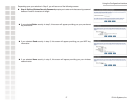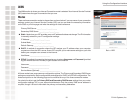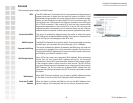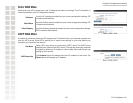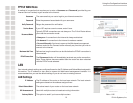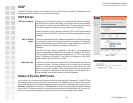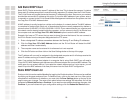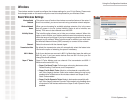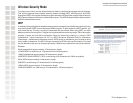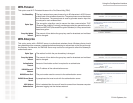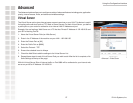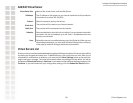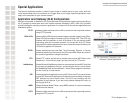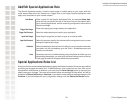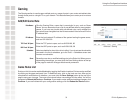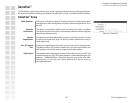
Using the Configuration Interface
25 D-Link Systems, Inc.
Wireless Security Mode
To protect your privacy, use the wireless security mode to configure the wireless security features.
This device supports three wireless security modes including: WEP, WPA-Personal, and WPA-
Enterprise. WEP is the original wireless encryption standard. WPA provides a higher level of security.
WPA-Personal does not require an authentication server. The WPA-Enterprise option does require a
RADIUS authentication server.
WEP
A method of encrypting data for wireless communication intended to provide the same level of privacy
as a wired network. WEP is not as secure as WPA encryption. To gain access to a WEP network, you
must know the key. The key is a string of characters that you create. When using WEP, you must
determine the level of encryption. The type of encryption determines the key length. 128-bit encryption
requires a longer key than 64-bit encryption. Keys are defined by entering in a string in HEX
(hexadecimal - using characters 0-9, A-F) or ASCII (American Standard Code for Information
Interchange – alphanumeric characters) format. ASCII format is provided so you can enter a string
that is easier to remember. The ASCII string is converted to HEX for use over the network. Four keys
can be defined so that you can change keys easily. A default key is selected for use on the network.
Example:
64-bit hexadecimal keys are exactly 10 characters in length.
(12345678FA is a valid string of 10 characters for 64-bit encryption)
128-bit hexadecimal keys are exactly 26 characters in length.
(456FBCDF123400122225271730 is a valid string of 26 characters for 128-bit encryption)
64-bit ASCII keys are exactly 5 characters in length
(DMODE is a valid string of 5 characters for 64-bit encryption)
128-bit ASCII keys are exactly 13 characters in length
(2002HALOSWIN1 is a valid string of 13 characters for 128-bit encryption)



